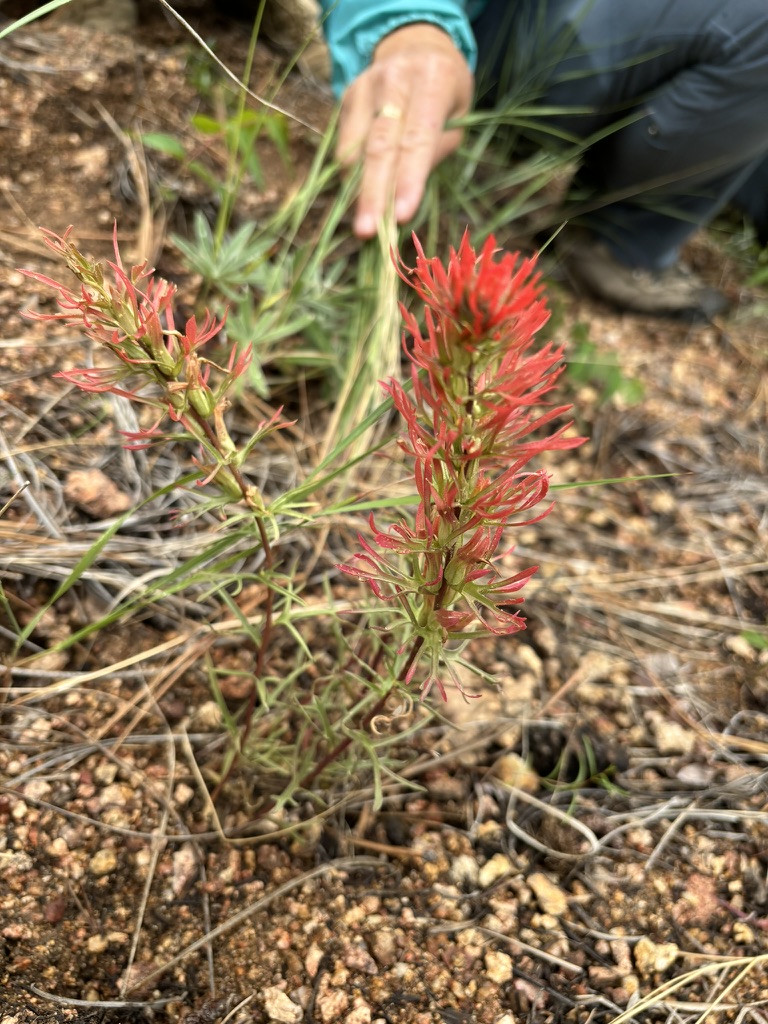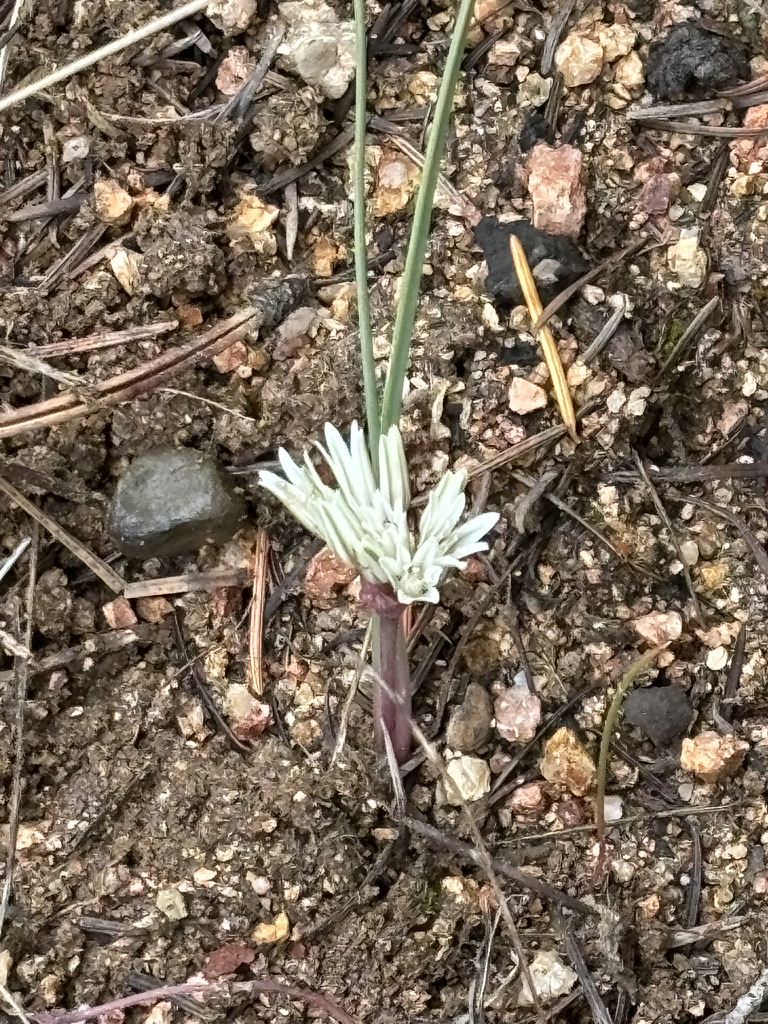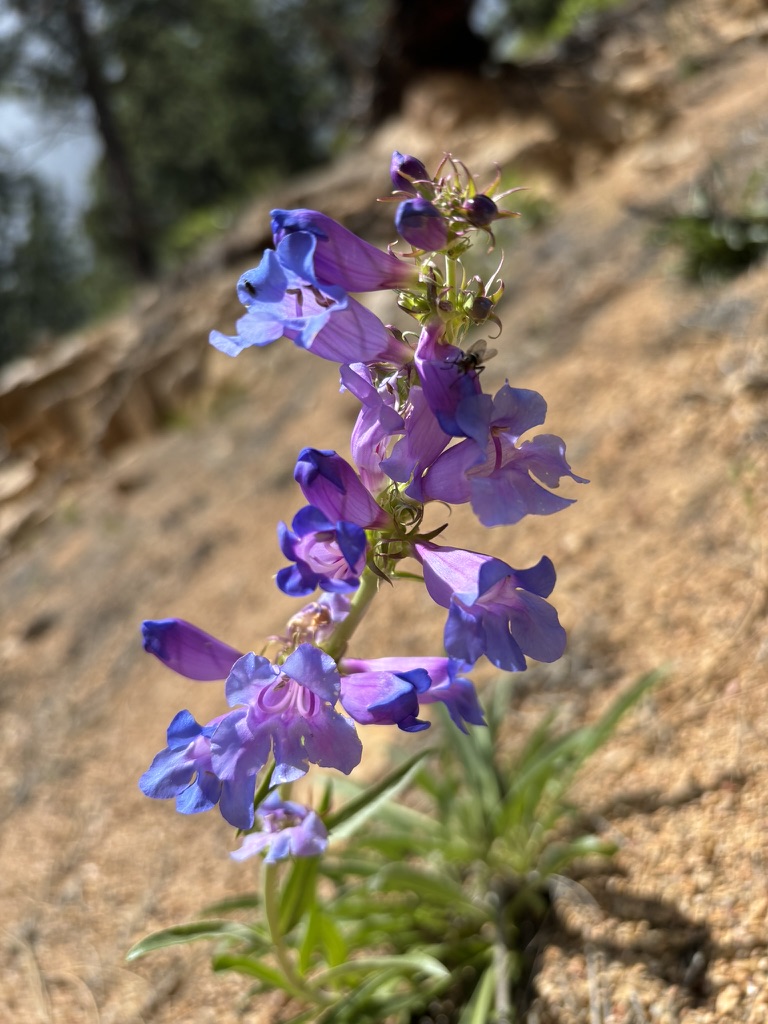Deb day. Tuesday June 18th. Fourth day on the job.
I had been hearing about Deb, this mysterious woman who had decades of Botany experience in the Bitterroot National Forest. She was going to be taking us out into the field today and schooling us on the ways of the plants. Li, a Montana Conservation Corps fellow, had arrived in Montana a few weeks before and already had a “Deb Day.” She talked highly of Deb’s teachings, specifically her tips on how to scale the steep slopes.
We piled into the truck and rumbled along towards the forest. As we turned into the cover of the trees she began to point out various birds and plants, and talked about the geological history of the Bitterroots. Winding up the West Fork, we squeezed by branches and bumped over holes and rocks. Eventually, we came to an opening at the base of a steep hill where two sensitive species grow.
Deb had been a seasonal botany technician for 17 seasons, and when she talked about plants it was clear she had invaluable botanical wisdom. She pointed out plants as we went along, showing us how we could distinguish serviceberry from spirea by the curve of the leaf veins, but also elk sedge from pinegrass by running our fingers along the leaves. I ran my hand along the elk sedge and it felt wiry and stiff, and the pinegrass was fine and smooth. Once I did this, their similar looking leaves seemed less confusing.
As we made our way up the hill we spotted some brilliant red among the green. It was one of our rare plants: Castilleja covilliana, or Coville’s Indian Paintbrush. Deb showed us how C. covilliana’s leaves are spidery and thin, compared to the thicker leaves of its more common counterpart, C. hispida. There was one individual, the one in the picture below, that looked totally covilliana-y to my new Montana-botany eyes, but there were other individuals around that I would have thought were C. hispida. Deb talked about how these plants are very plastic, meaning their features can vary a lot depending on the environment they live in. Leaves in particular are plastic, which is unfortunate considering leaves are an important distinguisher between C. covilliana and C. hispida. This all made me feel very confused.
I also learned later that Castillejas can hybridize, meaning two individuals from different species can “break the rules” and mate, forming a plant that is neither C. covilliana nor C. hispida. So not only are the leaves plastic, they might also genuinely be a mix of the two species. So I imagine the entire season I will be asking myself “are these leaves spidery enough to be C. covilliana?”

Deb then announced that we were looking for Allium parvum, or small onion. We scoured the rocky ground for the onion. I would take a few steps, then scan, take a few steps, then scan. I saw nothing. After awhile, Deb announced that she found one. We scrambled over to her, and I looked around on the ground, and saw nothing. Then she pointed to a tiny, pale wisp on the tan gravel. It was nearly the same color as the rocks around it, was less than an inch wide, and had detached from any leaves. I thought to myself that there was no way I would be able to spot this by myself.

As Li made her way over to us she spotted another onion. This one was slightly more conspicuous: still connected to the ground, connected to its leaves, and less dried out. It was a cute little thing, but still seemed hard to spot with its somewhat transparent petals and tiny stature.

After the Allium, we made our way back down the hill, ate lunch in the bed of the truck, and then headed to a second site. Again, we wound up curvy gravel roads, with steep drop-offs that made me feel a little dizzy. The next site was a hill of coarse granite pebbles. But gorgeous blue and purple flowers poked from the gravel. This was Penstemon lemhiensis, the rare penstemon. It has bigger flowers than its lookalike Penstemon albertinus, and has a white mid-vein on its leaves. This one was my favorite of the day: easily spotted, no confusing leaf evaluations, and flowers that seemed to glow in the sunlight.

I was surprised to learn that these rare/sensitive species tend to be on seemingly inhospitable slopes. I imagined the all the sensitive species being in hidden oases with crystal-clear water, not on harsh, gravel slopes. But I’ve seen them and they are there!
As we ended the day with Deb, I remembered how good it feels to be able to know and recognize the plants around me. Coming to Montana was a bit of a botanical shock, in the sense that I went from knowing a good portion of the plants in St. Louis, to knowing almost none. While I still have a lot of learning to do, it has been rewarding to feel myself getting familiar with the Montana flora.
Until next time,
Cicely
